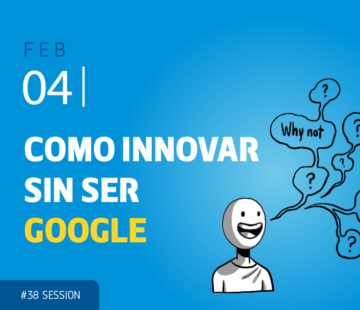Co-Session #33 Images are the New Conversations

New technologies and channels have democratized the production and distribution of images, exponentially multiplying a communication of facts and ideas that is increasingly audiovisual. That’s why we wanted to focus our 33rd Co-Session to images and, in particular, to their use as an element that generates new dialogues between consumers and markets.
State of the Art. Alfons Cornella, founder of the Institute of Next
Images can offer very different purposes. For example, we can find images created to allow us to see beyond the reach of our eyes, as well as videos, photos or illustrations that humans use to arrange knowledge, sell products and services, or even control other people, just like the omnipresent surveillance cameras already do.
Images can also be created to foster our imagination. There are images that motivate (to obey power or to fight it), lie, or have simply been created to be enjoyed. New technologies allow us to use images to search. For example, we can carry out a search using the picture of an object we want to buy or even a face similar to another one in an image, as is possible thanks to advanced surveillance systems and dating apps, among others. The images created to help us better understand the world around us are already being used to understand or learn more quickly and efficiently.
Images to Enjoy. Keys to Audiovisual Transformation. Jordi Castells, director of Vidneo, Lavinia Group
The audiovisual industry is currently experiencing a major revolution. In the context of an accelerated technological evolution, the roles traditionally played by the different actors in the industry are now blurring. This is explained by the emergence of phenomena such as Netflix, a DVD rental company turned into a global leader in video on demand thanks to the digital channel, as well as a major film and series producer. Telecommunication companies such as Moviestar, Vodafone and Orange are also starting to become producers in order to achieve greater loyalty among their telephone customers.
Internet giants with very diverse markets and business models have also recently entered the markets of audiovisual production and distribution. Amazon offers series and movies to its Prime customers as an added value. Facebook has acquired football rights in Asia to offer the matches for free to its users. And Disney, a company that has traditionally focused on production, will soon launch its own digital platform to compete in this area and offer its products directly to the consumers.
Images to Mean. Images for Communication. Mariona Omedes and Karin du Croo, co-founders of nueveojos
The list of projects carried out by the studio for audiovisual creation nueveojos includes works such as Albert Pla’s latest shows, a lighting show on the façade of the Sagrada Família or mappings projected onto the Casa Batlló in Barcelona, among many others.
A special case of audiovisual innovation was the creation of a unique piece to be exhibited in the Ciutadella park commissioned by the Barcelona City Council on the occasion of the city’s annual festival. For this piece, nueveojos was innovating without being aware of it, from the creative impulse to try something that had not been done before: to use five consecutive gobelins (transparent screens on which images can be projected) to create the effect of seeing a moving image created in several layers. The result: a new type of image and sensation for the viewer. Maybe nueveojos was unintentionally creating the first holographic cinema.
Workshop. Alex Cervera, Andrea Luelmo and Fèlix Torres . Firma
A couple of simple, hands-on experiments helped us to see to what extent images are more powerful or more efficient than other factors when it comes to communicating values or experiences. And also how brands use images to stamp on our memory or evoke with our imagination those values and experiences that they wish to be associated with.
The first of these experiments consisted of several visual memory exercises individually performed by all attendees using the Kahoot! app. The results confirmed that, indeed, we remember the objects, people or ideas much better if they are presented to us in a visual way. In the second task, we had to guess the target audience and values transmitted by different brands from a set of images they use in their advertising and social media, but they were presented anonymously. The results showed different levels of accomplishment between the brands that seem to have achieved that visual engagement very efficiently and the brands that apparently have not.
